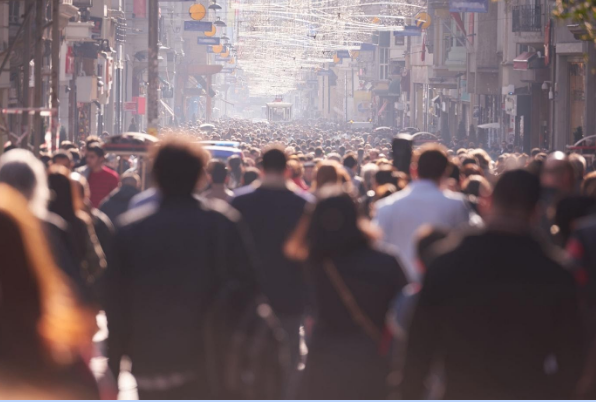Warning: Undefined array key "sharing_networks_networks_sorting" in /var/www/wp-content/plugins/monarch/monarch.php on line 3904
Warning: Trying to access array offset on value of type null in /var/www/wp-content/plugins/monarch/monarch.php on line 3904
Have you ever thought about all the benefits that living in a multicultural city brings? From the conversations you have to the food you eat, the entertainment you enjoy, and the learning opportunities you have, there’s a great deal to be grateful for if you live in such a city.
You can meet more interesting people
When everybody shares the same background and has been raised with the same set of ideas, what’s to talk about? Multicultural cities are full of interesting people with engaging stories to tell. They’ll open up your eyes to the wider world and make you feel grateful for the good things you have, as well as inspiring you to discover new things. Make friends with people from different backgrounds, and you’ll find yourself rethinking aspects of your own identity, exploring things that you took for granted, and ultimately coming to know yourself better. Meanwhile, your city will benefit from the wealth of different ideas that a diverse community brings. For instance, in the workplace, it makes it easier to find solutions when problems arise and adapt to new ways of doing things. First-generation immigrants have a lot of experience where that’s concerned.
Kids get a better education
Teachers often note that in cities with recent immigrants – especially those who have escaped from war zones and other places where their education was disrupted – everybody works harder, with the immigrant kids’ enthusiasm inspiring others. Kids who come from the same city but have grown up with different cultural traditions or have had different experiences because of their race or ethnicity also improve the educational environment. As the academic Bree Picower noted, they can help identify biases in the system, which may not be evident to those with majority privilege. They can also share different perspectives, which benefit all the children to develop a richer and more nuanced understanding of the information with which they’re presented. That helps to improve the critical thinking skills they will use for the rest of their lives.
It’s a creative space
Where lots of different perspectives and traditions come together, it’s not just good for kids – it creates a fusion of ideas that provides fuel for creative work. It’s no surprise that cities like New York, London, and Toronto are creative powerhouses, nor that many of their most productive arts organizations are known for their diversity. People from different backgrounds bring different folklore and different story formats and unique musical traditions, styles of theater, and so forth. They learn from each other and find new ways of looking at the world. Different religious, moral, and philosophical ideas also enrich creative output and help it speak to diverse audiences. Creative work produced in this way has great potential to travel and be understood in different places worldwide. However, if you’re a creative person – even at an amateur level – there’s nothing like being in the belly of the beast.
Amazing things happen with food
Just as the arts benefit from a fusion of traditions, so does the cooking. From New York to old Amsterdam, there’s a history of innovation in the same areas where one can enjoy a different ethnic cuisine every day of the month. You’ll also find delightful little twists on old favorites where chefs from different backgrounds cross over. Food festivals are also a real treat in cities like this, with something happening almost every week of the year. They provide the ideal starting point for those wanting to sample the best of cuisine they’ve never tried. People who like to experiment at home can obtain a much larger variety of ingredients than they would find elsewhere. It’s not just food, either – if you like coffee, tea, or liquor, you’ll encounter many more variants, and every one of them with a story attached.
It’s easy to learn languages
Did you know that more than half of the world’s population speaks two or more languages fluently? Although most Americans know at least a small amount of Spanish, true bilingualism remains rare outside recent immigrant communities. That puts us at a disadvantage when traveling and limits our access to information, meaning that we miss out on some beautiful poetry and prose which can never be fully captured in translation. Learning another language will open up your horizons and give you a much richer understanding of your own language as you start to understand why words sound and interact as they do. It’s much easier to do so in a multicultural city where you can hear other languages every day and perhaps find native speakers who don’t mind answering your questions or helping you practice.
All these advantages make multicultural cities a great place to spend time, and they are deeply rewarding to live in. We all live richer, more fulfilling lives when we celebrate our variety.

